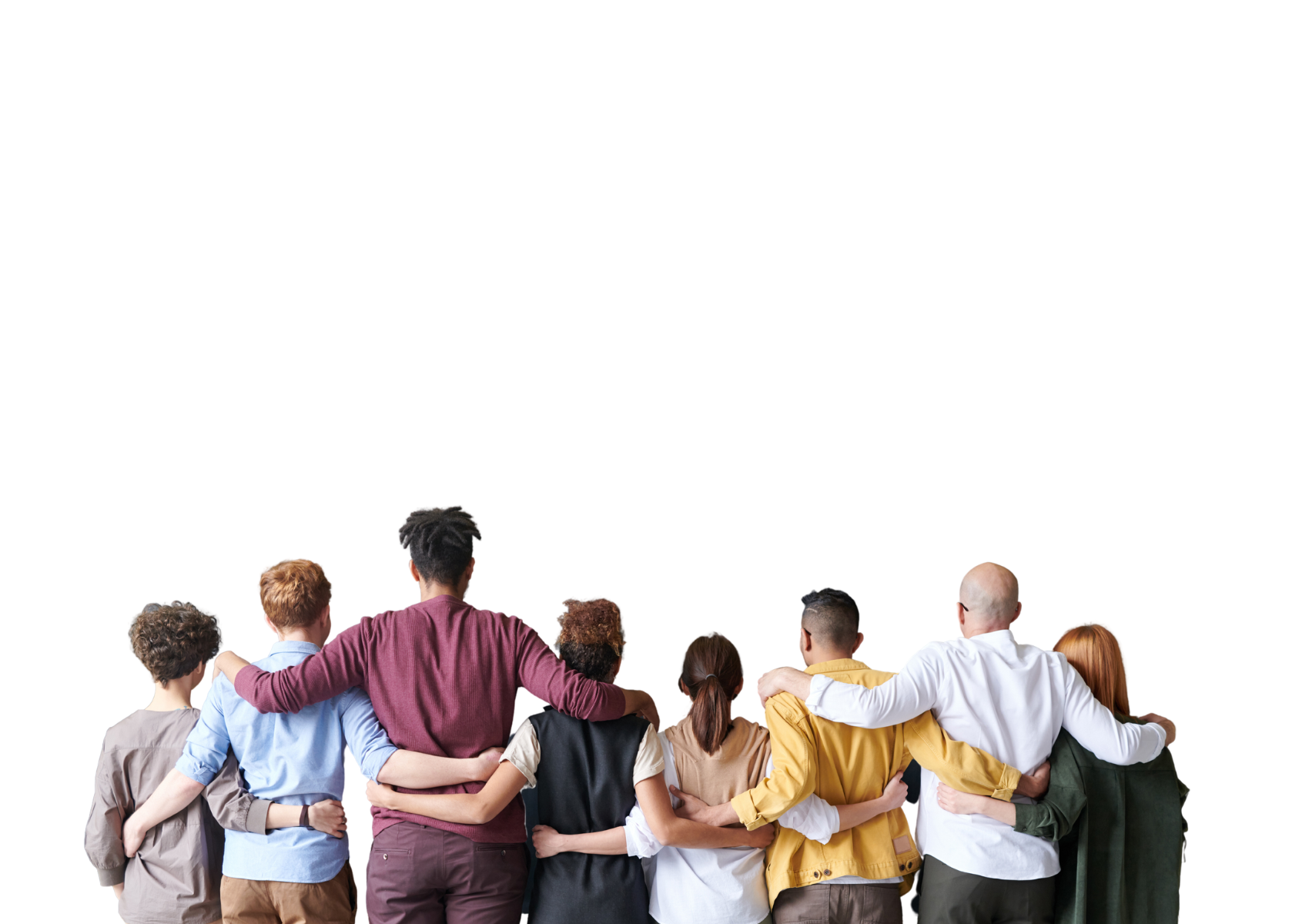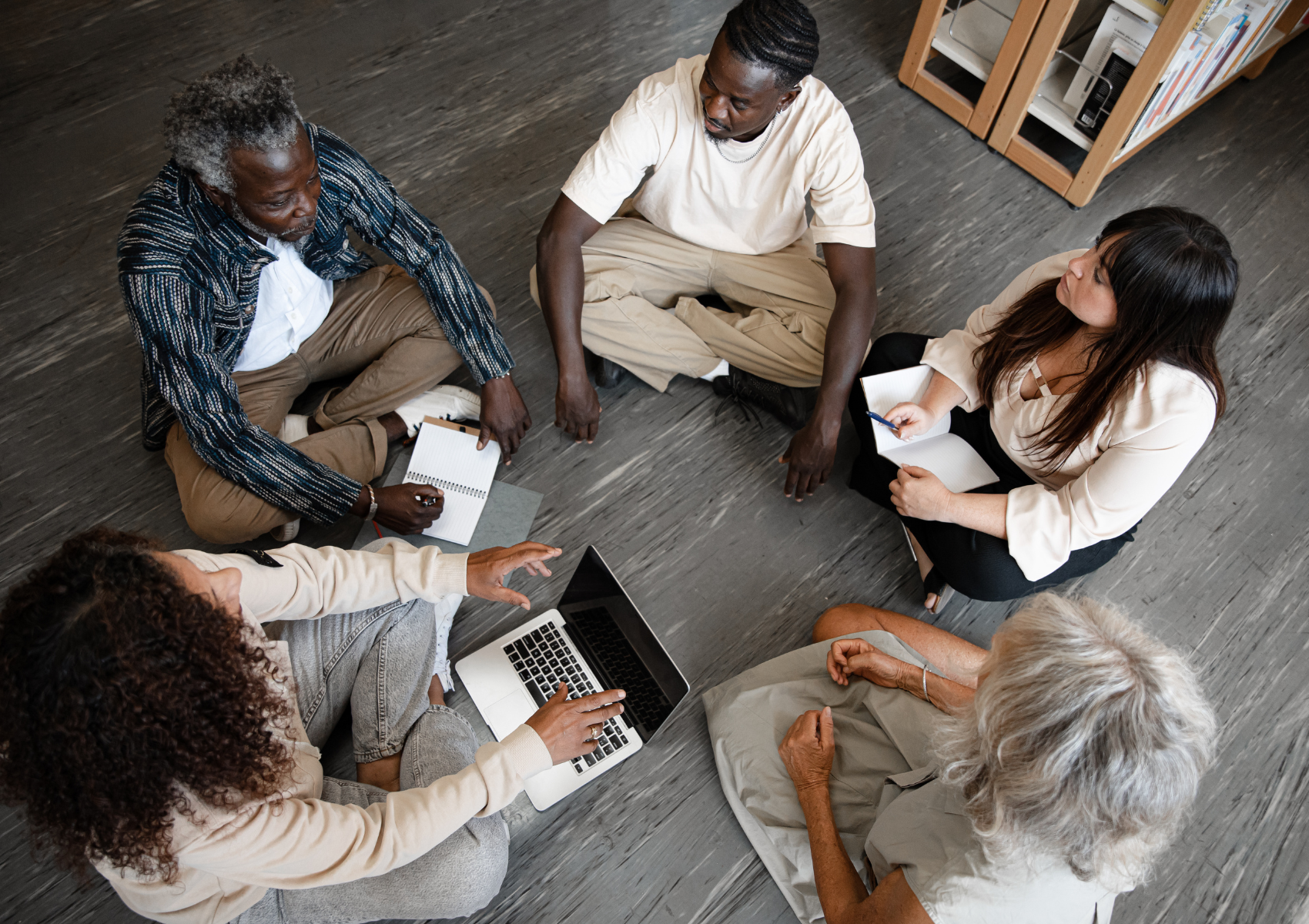
Coalitions and Collaboration: The Power of Relationships
About the Authors
MIN JAE KWAK attends Yale University, studying Global Affairs. Originally from Denver, Colorado, he became interested in environmental issues through his coursework exploring how economic and political factors influence environmental policy and goals. In addition to his interest in the environment, he is also passionate about education research and mentorship.
SHRUTI MACHIRAJU graduated from Texas A&M University with a B.S. in Bioenvironmental Sciences in 2022. She is the former Co-Chair of the Congressional and Corporate Outreach Team at Change the Chamber. She’s met with several legislative offices to discuss environmental regulations and policies, and she has helped build relationships with various environmental organizations. She has also presented about environmental laws, policies, and regulations to university faculty. She is interested in environmental law and policy, environmental justice, and sustainability.
Supporting Author: Tony Passino

TABLE OF CONTENTS
Key Learnings
Required Content
Supplemental Content
Introduction
Finding Common Ground
Building Relationships Through Dialogue With Emotional Intelligence
Handling Anger
Conflict Resolution
I Messages
Moving from Conflict to Conversation
Relationship Building
The Power of Coalitions
Examples of Coalitions
Building a Coalition
Creating a Shared Vision and Collaboration for the Coalition
Module Summary

Overview
Your individual efforts are multiplied many times over when you effectively collaborate with others. As a changemaker, coalitions are a key component to creating long-lasting sustainable change in the world. This module focuses on the power of relationships and coalitions, and how you can leverage them in your work as a changemaker. Furthermore, to make a lasting impact in your community, it is important that you work with not just like-minded allies and individuals, but those with differing views as well. This module will guide you to find commonalities with those with differing opinions and to find ways to work towards a common goal. It also explains the role of coalitions and ways to build them.
Key Learnings
Upon completion of this module, you will have:
Learned how to establish constructive dialogue.
Identified commonalities and balanced conflicting priorities.
Understood the value and basic principles of coalition building.
Required Content (1.5 hour estimated commitment)
To complete this module, you must:
Read the entire module.
Watch the following videos:
Supplemental Content
The following articles / videos / resources are recommended but not required:
Peoples Climate March
Living Room Conversation Guides
Conversation Agreements
Clean Energy Economy & Workforce Preparation Toolkit
This toolkit helps you understand how to build coalitions with practical strategies and tactics.
Dialogue Fixes
This page from the US Partnership’s website has multiple resources for building your conversation and discussion skills.


Introduction
A fundamental aspect of being an effective changemaker is building community and mobilizing around your goals. Whether it is your vision of the future or a specific campaign, being able to motivate communities toward action is an essential skill to learn. This includes rallying not just like-minded allies, but sometimes strategically including other people who might be apathetic, misinformed, or unsure about environmental issues overall. The environment is complex, and so are the problems surrounding it. The work of being a changemaker cannot happen alone. To work towards a brighter future, it is important that you work with others. In this module, you will learn how to work with people, including those that you may disagree with, and how to build coalitions to affect change.
The power of relationship and coalition building cannot be understated. For example: one of our academic mentors shared with us how they built enough relationships among the faculty at their college to create a coalition that got sustainability skills included as core general education outcomes for all students. She also built two network coalitions of over sixty national higher education organizations, focusing them on education and actions for sustainability (see DANS and HEASC). Coalitions can be used in many ways to amplify your efforts as a Changemaker. Before learning how to create or join a coalition, it is important that you take the time to build the skills needed to work with a diverse group of individuals. Building coalitions is most often done with people with similar views and values, but knowing how to build relationships with those who are different in their views can open up opportunities for broader coalitions and more systemic changes.

Finding Common Ground
Think about the many people in your life, from close friends and family to teachers, professors, co-workers, and acquaintances. Do you have the exact same views as them? The answer is probably not! The world is filled with different people with their own unique perspectives on many issues.
One area that has been a flashpoint in the environmental movement is the political arena. The media often presents politics as being fundamentally hostile and adversarial, but there are historically many great examples of collaboration and action across political differences, and many ideas and values that exist both inside and outside of politics that may help bridge political or other types of differences. For instance, many people value clean air and drinking water, feeling safe in their community, and the idea that we should care about the people within it.
Having a conversation about what we share in common can be a great place to start when talking with someone who you may disagree with. Conversations are just a beginning, so don’t worry if they don’t immediately produce results. It’s better to first establish a connection, and then work on building the relationship so you can find common ground. To solve our environmental issues, it is important that you move beyond any political polarization or other obvious differences to see what you can agree on.

Building Relationships Through Dialogue With Emotional Intelligence
The holidays are in full swing, and you are at home visiting family. Your uncle brings up a divisive political issue, and this quickly turns into a full-blown argument. Sound familiar? Talking about the environment can be challenging at times, especially when you engage with people who may not share all of the same views. People can hold a wide range of perspectives on any given issue, and this will sometimes lead to conflict. Take this as an opportunity to understand others’ views and broaden your connections.
Handling Anger
Every changemaker journey encounters difficulties. Though anger is a valid reaction, it’s never the first or most useful emotion for anyone. Anger impedes effective communication with others, and can get in the way of your message because spewing anger makes people feel attacked and defensive. As a changemaker, keeping your more volatile emotions under control creates a space where you can understand your own anger, and work through it effectively. This video talks you through some ways of understanding the feelings under the anger and how to handle your behaviors.
Learning to identify, manage, and work through your anger or other strong emotions is a part of emotional maturity. It doesn’t mean you’ll be immune to anger, only that you’ll be able to handle it with more skill. This skill can take time and practice to get better at, but like listening or writing skills, you will evolve and refine your ability to handle your anger and that of others over time.
Conflict Resolution
Conflicts, be they big or small, are a natural part of interpersonal relationships. Whether you’re working with close friends and family, or with new allies, you have a duty as a changemaker to deal with conflicts responsibly. Effective conflict resolution can often give rise to great solutions, but only when all of the parties involved work together to dispel any hard feelings and find a solution. We’ve put together some steps to help you diffuse and work through conflicts that arise in your changemaker journey or personal life.
I Messages
One of the best ways to express your own emotions to others is through I Messages. Learning how to express your feelings to others in a way that is both intelligent and honest helps foster good communication. An I Message starts with naming your own emotions and attaching them to a behavior and time that you wish to address. I messages can be hard to use at first; it’s not how most of us normally work through our tough emotions, but they’re a good way to identify and correct incidents of misunderstanding and hurt. I Messages are a way of getting to the heart of the issue and working towards resolution.


Moving from Conflict to Conversation
As As a changemaker, you want to develop the skills to have the kind of conversations that build community and bridge differences. For more on having conversations with people you disagree with, Living Room Conversations has a wonderful list of topics with accompanying conversation guides that were created so that anyone can feel comfortable joining the conversation. By focusing on the common ground you share, you increase your chances of having a positive outcome. The site also provides the following list of conversation agreements that can be used to have a productive and civil conversation. When starting any meeting or conversation, it can be useful to establish that all participants will follow conversation agreements such as these. If a participant starts to get disrespectful or starts interrupting, it is useful to then ask them to adhere to the agreements.
CONVERSATION AGREEMENTS
Be curious and listen to understand
Show respect and suspend judgment
Note any common ground as well as any differences
Be authentic and welcome that from others
Be purposeful and to the point
Own and guide the conversation
When talking with someone you disagree with, it may be tough to agree on many things. If you find that the conversation is not going anywhere productive, it may be helpful to take a step back, calm down, and then discuss the above conversation agreements. In a perfect world, discussing these agreements could help to set the foundation for a productive conversation. While this may be ideal, real-life conversations can be more tricky.
Don’t get mad at yourself or others if a conversation does not go well; many difficult conversations don’t go as planned on the first few tries. Instead, think of it as a learning experience, and use what you learned to approach the next conversation with more skill. With each conversation, you get better at having productive conversations.
Central to having a productive conversation is your ability to actively listen to what the other person has to say. Listening is the foundation of effective relationship building because it builds trust and creates the space for real, honest conversations. To be an effective listener you can repeat back part of what someone says or summarize what they said to show that you are listening. People often need to feel heard before they can listen to what you want to say. The communication module expands on the importance of building your listening skills.
Relationship building is a fundamental component of being an effective changemaker. As a changemaker, you can use relationship-building tactics to engage with everyone and anyone, regardless of whether or not they share your point of view. Up until now, we have been focusing on how to engage with people you disagree with. When it comes to being a changemaker, engaging with those you disagree with is important but it is not everything. Most coalitions are made up of allies (with similar views) that can help you reach your goals.

Relationship Building
As an environmental changemaker, you are not alone. In fact, there are millions of individuals around the world who take action on climate and environmental issues. A coalition, which is made up of groups and people with aligned goals working together, can be a way for you to increase your effectiveness. At the heart of coalition-building are the relationships that make up the group. When people feel connected, they will be more apt to take action with and for each other. It’s important to build relationships across the board for a number of reasons, such as access to resources, new perspectives, useful contacts, and information. As you move through the next section, consider the following questions.
OPTIONAL JOURNAL QUESTIONS
How does relationship-building contribute to the formation of coalitions?
What is the value of building your listening, anger management, conflict resolution and conversation skills in your personal life and in your work to create and participate in coalitions?

The Power of Coalitions
We are not the only ones working towards a cleaner and more sustainable environment, and it is when we work together that we find our true power to affect change. An important element of changemaking is convening the right people to bring together different skills and knowledge to build a coalition where discussion, resource sharing, and action can occur. Watch the following TED talk by Kartikeya Singh that discusses how coalitions can be used to affect change as it relates to the environment and consider the following questions:
OPTIONAL JOURNAL QUESTIONS
How can coalitions be used to affect change?
How can you, as a changemaker, use coalitions?
After understanding the value of coalitions, the next step is to take action. Look first for existing coalitions and groups that align with your goals and connect with them. If no formal and effective coalition exists for collaboration that you can join, you can create a coalition. Take a look at the groups below and think about finding a coalition you would be interested in joining.
Examples of Coalitions
Climate Action Campaign’s Coalition (CAC) - CAC is a coalition of over a dozen major national environmental, environmental justice, and public health groups as well as over 60 partner and ally organizations that work together to drive science-based federal action addressing climate change. Many of their partner organizations have individual membership options, including League of Conservation Voters, Sierra Club, and Environmental Defense Fund.
Change the Chamber’s Environmental Justice Report - CTC’s Environmental Justice Team partnered with InfluenceMap and ClimateVoice to release its report revealing the U.S. Chamber of Commerce’s ongoing efforts to hinder the passage of effective climate policies and protections for marginalized communities. To consider joining Change the Chamber, visit this page.
Clean Energy Ministerial (CEM) - CEM convenes experts, companies, and countries from across the world to promote policies and programs advancing clean energy technology and accelerate the global clean energy transition. You can join the LinkedIn group here.


Building A Coalition
Whether you start your own group or join an established one, building community, or a coalition, around a shared goal can make you more effective. It may seem daunting, but building a coalition can bring many benefits to you and your group. When building a coalition, remember there is no real hierarchy; hierarchies are invisible structures invented by people and so it is completely okay to reach out to the top levels of an organization. It is always useful to have a title yourself and a credible organization to get past the gatekeepers, so join one or start one. You can directly contact an organization and ask who is most interested in environmental issues (if that is your focus) and then start a conversation with them.
The first thing to consider when building your own coalition is to consider your goals, and whether the groups you want to be in your coalition share them. For example, you might bring together a group of people to form a coalition around sustainable development or focus on education for climate adaptation and mitigation. Establishing clear goals can be important when trying to recruit for the coalition. When you approach an established organization with a coalition opportunity, it is important that you get buy-in from key members who are helping to organize the group. This means that you must convince them that any coalition or sharing between your groups will be beneficial to you both. Starting with key members means that they appreciate, understand and share your vision of collaboration, and can help you convince others within their organization. This is where the relationship-building techniques discussed earlier come into play.
Regardless of whether you are building the coalition by yourself or with others, you need to include the following people:
Key stakeholders from every organization. (These are people who care about the cause of the coalition).
You can reach out to similar groups locally, statewide, nationally, and even internationally for support, inspiration, and a chance to learn and share resources.
You can also look for different groups, those with different backgrounds or opinions, that have interest or influence around your cause. This can be anyone that you feel would work well with you and your group, from religious groups or student organizations. It's another chance to reach outside of your own sphere to listen and create dialogue around different perspectives.
PRO TIP
Be sure to schedule time in calendars for next steps. This will help you hold yourself and the coalition accountable to forward progress.
Creating A Shared Vision and Collaboration for the Coalition
[Source: CEM Empowering People Initiative Toolkit]
Think back to your vision of the future. Each person in a coalition has a positive vision of the future, and those experienced in building coalitions have said that within coalitions, the visions for the future of the participants are often similar. As a changemaker, it is important to honor the perspectives of all those who have come together to form the coalition. As the group meets, it is worthwhile to find common ground and a shared vision by using the 4 Ps of creating a shared vision. Within a few hours, the group can brainstorm:
Probabilities - What will happen if we do not create change? This builds the motivation to change and can be done in a whole group setting.
Possibilities - What are the possibilities for the future of our community (or region or country)? In small groups, create these lists and make them visible to the whole group.
Preferabilities - What is our preferred future? Have participants choose and rank their highest priorities. Identify the top shared priorities and a shared vision emerges.
Preparations - What needs to happen to create our preferred future? Create workgroups on the components of what needs to happen. Allow attendees to then self-select into the workgroups.
After the 4 Ps, have workgroups report at a regular interval (ex. bi-monthly) on their efforts and celebrate their progress. Bring them more participants if they are not following through.
PRO TIP: TRACKING THE COALITION
Create a document showing all the connections you make so they can be nurtured. Include:
The name, role, organization, and contact information
A basic description of the intent or desired outcome for each connection
Notes about the person/connection
A FINAL WORD ON COALITIONS
Remember, a coalition is not formed overnight. You will find coalitions extremely useful as you continue in this next module to learn how to create systems change. At their core, coalitions are built on a network of relationships that can take some time to develop. Patience here is important as you continue to build your network as a changemaker. As time moves on, your network gets bigger, and your influence as a changemaker increases.






